This Filipino sisig combines grilled pork and liver, tangy calamansi, and chilies for a main dish that’s both crispy and spicy.
You’ll know it by the sound: an impatient sizzle rising from a cast iron plate. Here, the meat meets the flame head-on. A vinegary aroma wafts up, followed by smoke marked by its time over glowing charcoal.
Long before crowds gathered around that dramatic crackle, sisig was a humble dish: a tangy salad served at room temperature, prescribed to soothe the stomachs of expectant Kapampangan mothers.
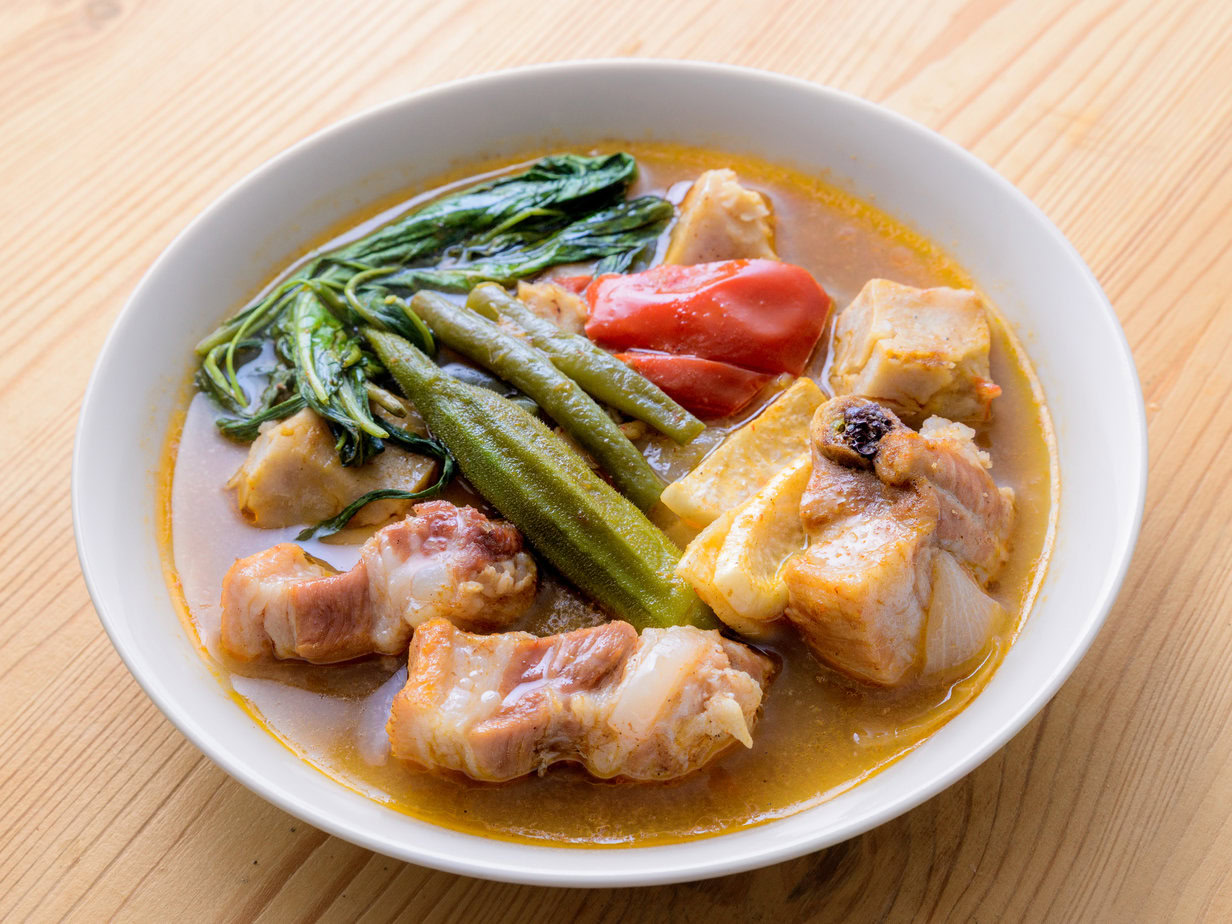
A bit of history
In 1732, Augustinian friar Diego Bergaño recorded the word “sisig” in his Kapampangan-Spanish dictionary. He wasn’t talking about pork at all, but about green papaya or guava marinated in palm vinegar, salt, pepper, and a bit of garlic—a tart tonic meant to ease lihi, or pregnancy cravings. Acidity defined the dish. Meat wouldn’t become common until the early 20th century.
By the early 1900s, Pampanga cooks were already thinking “nose to tail.” Boiled pig heads—maskara bristling with ears, snout, and jowls—were sliced into bite-sized pieces, then tossed with sukang sasá (nipa palm vinegar), onions, and fiery bird’s eye chilies. Served at room temperature, the mix landed somewhere between salad and ceviche, known locally as kilawin.
The dish took a decisive turn during the American occupation, in the mid-20th century, along the fences of Clark Air Base. American butchers cared little for pig heads, tossing them out or selling them for a few centavos. Kapampangan vendors—naturally thrifty and proud of their palates—snatched up these scraps and worked them into their tangy salad. What began as a remedy became a working man’s snack, perfect with a cold glass of San Miguel, just like lechon kawali.
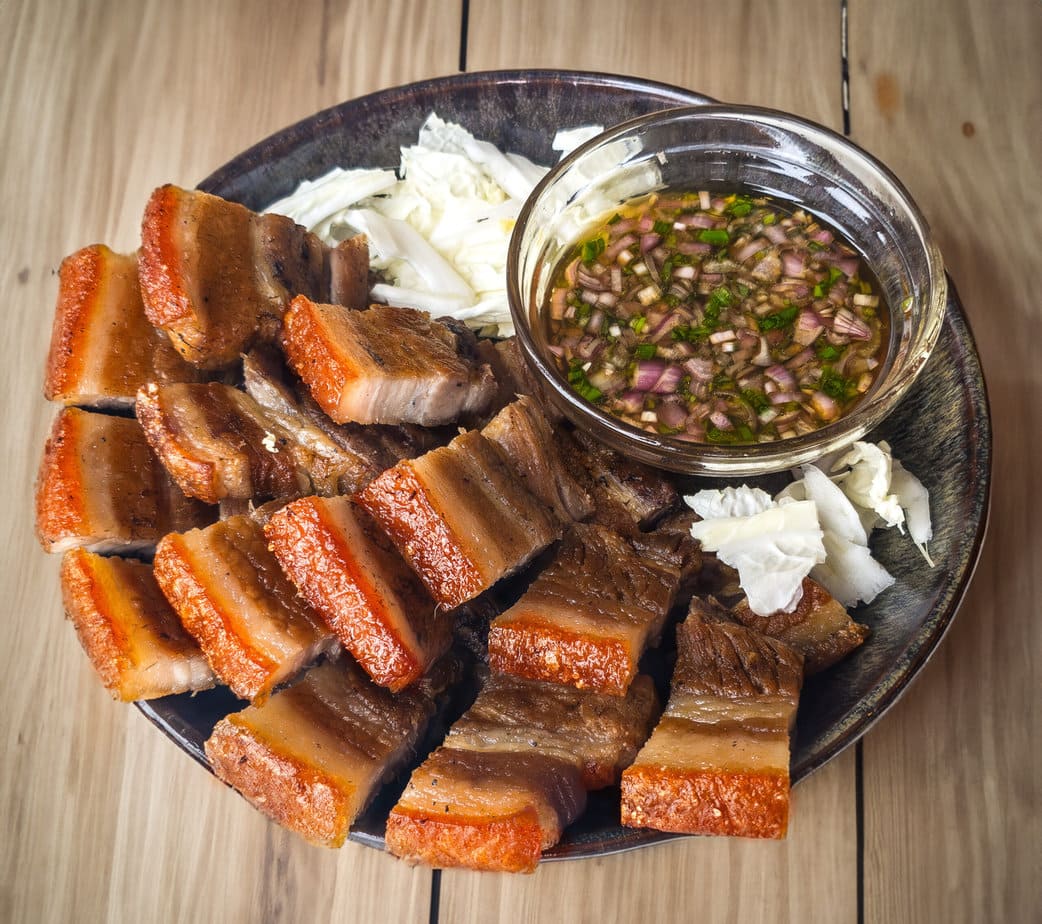
Then came 1974 and the stroke of genius—or maybe accident—by Lucia “Aling Lucing” Cunanan. A batch of grilled pig ears had charred more than expected. Instead of tossing them, she chopped up the smoky bits, mixed them with chicken liver and mashed pork brain, and—crucially—served the whole thing on a blazing hot metal plate that was still sizzling when it hit the customer’s table. That same year, the Philippine Department of Tourism recognized Angeles City as the “sisig capital of the Philippines,” and what started as thrift became a national icon.
So, what exactly is Sisig?
Ask a Kapampangan what belongs in real sisig and the answer is always the same: start with maskara (ears for crunch, snout for gelatin, jowls for juicy meat), plus a spoonful of chicken liver or mashed pork brain for a silky texture.
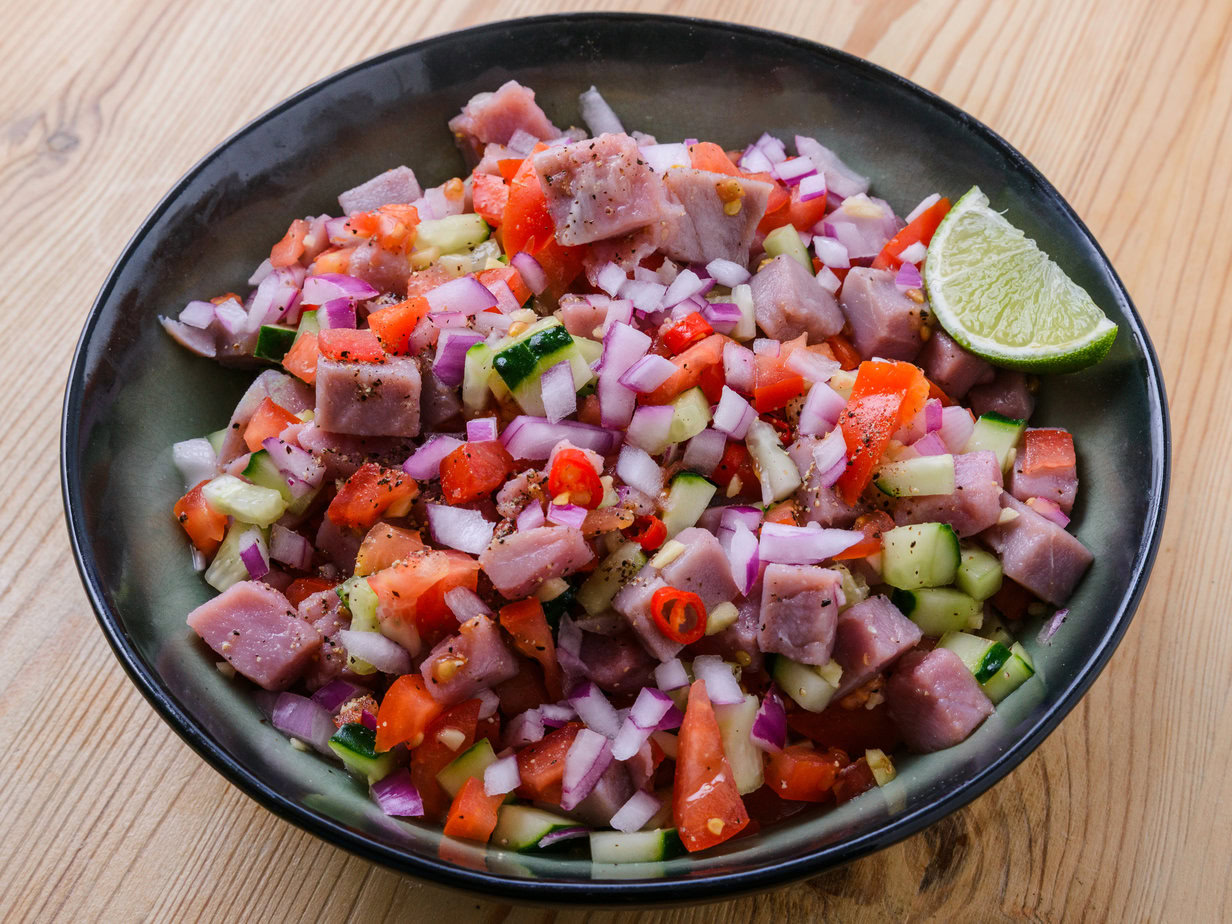
The seasoning stays simple: natural nipa palm vinegar and fresh calamansi juice for brightness; salt, cracked pepper, and a hefty amount of chopped onions; slivers of bird’s eye chili hot enough to make you sip your beer between bites. No soy sauce, no sugar, no creamy shortcuts.
Preparation unfolds in three acts:
- Boil the head with bay leaves and peppercorns until the cartilage yields to a knife.
- Grill the pieces over charcoal until the skin blisters and the meat is deliciously smoky.
- Finally, chop everything by hand (never blended) into a fine dice, then toss it onto a cast-iron skillet slicked with rendered pork fat. At the very end, add vinegar, calamansi, onions, and chilies, as if dressing a “hot salad.”
The dish arrives unadorned, except for a few halved calamansis whose citrus oil perfumes the steam.
The egg and mayo controversy
If you want to start an argument in a Filipino kitchen, just crack a raw egg over sisig—or worse, stir in some mayonnaise. Traditionalists argue that liver or brain already melts into a natural emulsion; adding mayo is a clumsy shortcut that dulls the vinegar’s brightness.

Some will tolerate a yolk dropped onto the sizzling plate as a garnish, but few Kapampangans consider it essential. Other liberties—like swapping the head for pork belly, chicken, or tofu, grinding the meat to a paste, or piling chicharrón on top—might make for a tasty snack, but they lose the crunch of cartilage and the tangy-savory balance that define the original.
Even the famous sizzling plate, beloved as it is, is technically optional; what matters is the harmony between meat, fire, and acidity.
Sisig in Kapampangan culture
For people in Pampanga, sisig is more than just bar food—it’s a symbol. Locals greet each other with this boast: “Basta Kapampangan, sisig mu ing sakalam!” In other words: our sisig is the strongest, the best. Sharing a sizzling plate is seen as an act of love—a communal picking of crispy bits as beer bottles bead with condensation.
Since 2003, every December, the streets of Angeles light up for the sisig festival Sadsaran Qng Angeles, where massive glowing grills look like runways and cooks compete for bragging rights. In 2017, the city council passed a heritage ordinance to protect the recipe—a civic shield against mayonnaise and shortcuts.

Ingredients
- 750 g pork head parts (ear, skin, and jowl) grilled
- 250 g chicken liver grilled
- 2 white onions thinly sliced
- 10 calamansi (or limes) juiced
- 1 green chili thinly sliced
- 2 red bird’s eye chilies (labuyo) thinly sliced
- salt to taste
- pepper to taste
Garnishes
- sliced chili pepper
- scallions
- calamansi
Instructions
- Grill the pork head parts (ear, skin, and jowl) until well browned.750 g pork head parts (ear, skin, and jowl)
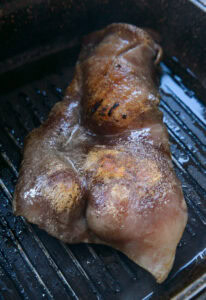
- Grill the chicken liver until well browned.250 g chicken liver
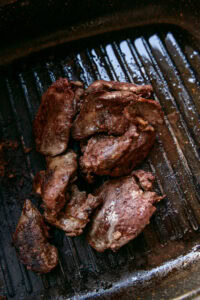
- Finely chop the grilled pork and set aside.

- Finely chop the grilled chicken liver.
- In a large bowl, combine the chopped pork and chicken liver.
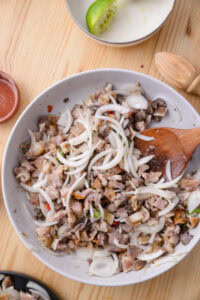
- Add the onions, chilies, and calamansi juice; add more juice for extra tang.2 white onions, 10 calamansi (or limes), 1 green chili, 2 red bird’s eye chilies (labuyo)
- Season to taste with salt and pepper.salt, pepper
- Serve on a plate and garnish with a wedge of calamansi and sliced chili.sliced chili pepper
- For a sizzling plate presentation, preheat the plate, lightly oil it, arrange the sisig, then garnish with calamansi and sliced chili.
Notes
Culinary sources
• The origins of sisig – Positively Filipino (English)
• Sisig: The tragic story behind our favorite pulutan – Pepper.ph (English)
• Sizzling sisig recipe – Freedom Republic (English)
• Sisig – Wikipedia (Tagalog)
• Vol. 10 No. 71 – Punto (English)
• The Happy Home Cook: Sizzling Sisig – Positively Filipino (English)
• Kapampangan cuisine: A taste of the Philippines’ “culinary heartland” – Inquirer (English)
• Angeles food trip: The search for the best sisig at its birthplace – Zoy To The World (English)
• From crispy sisig to leche flan to halo-halo, from Ilocos to Pampanga – Lifestyle.INQ (English)
• Taste the real original sisig at Aling Lucing – no egg… – Facebook (Tagalog)
• News – Mama Sita Foundation (English)
• Easy pork belly sisig without liver or mayo – Eat With Carmen (English)
• I was trying to make an authentic-tasting Filipino sisig… – Reddit (English)
• Cheater’s sisig recipe with ground pork – TikTok (English)
• Authentic Kapampangan sisig recipe with pork belly – Foxy Folksy (English)
• Made sizzling pork belly sisig for dinner – Reddit (English)
• The real sisig without egg or mayonnaise – 9GAG (Tagalog)

